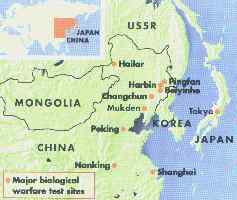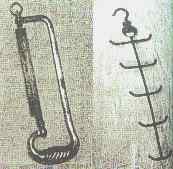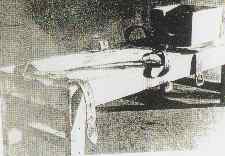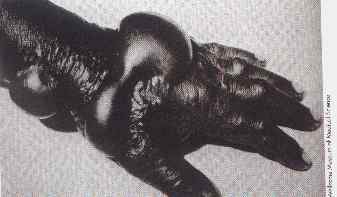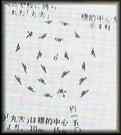UNIT 731 Atrocities
by Thomas Antoniadis
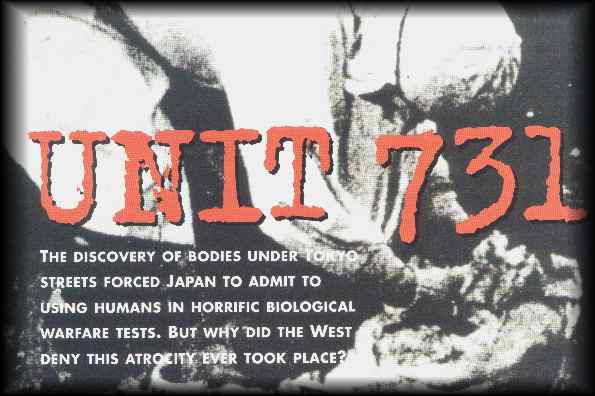
"And have no fellowship with the unfruitful works of darkness, but rather reprove them. For it is a shame even to speak of those things which are done of them in secret." -Ephesians 5:11-12
| In 1989 an appalling discovery swept across
Tokyo. A construction crew working at Shinjuku found beneath a pavement, a
massive cache of human remains. The horrific news spread quickly around
Tokyo and the Japanese government decided to make a statement which would
lead to the revelation of the most terrible secret of World War II. Some
meters away from the construction site lay the wartime laboratory of
Lieutenant General Shiro Ishii, father of Japan's
top-secret biological warfare program; Unit 731.
Unit 731 was acquiring human guinea pigs from the Manchuria base to Tokyo. After the end of WWII, the bodies were disposed in a massive grave and Unit 731' s activities remained Japan's most closely guarded secret. |
The Shinjuku area in Tokyo |
|
A map of the major biological warfare test sites
Shiro Ishii; the mastermind of Unit 731 |
The Missing
Link
Unit 731 would be unknown today to the mass public unless in 1984 a student, had not made a weird discovery in a second-hand bookshop; notes by a military officer. The officer was stationed in Unit 731 and his notes were concisely detailed and described the biological experiments which he clearly points out that they were using humans for the purposes of Shiro Ihii and his team. Shiro Ishii was an intelligent Army microbiologist whose flamboyant personality soon attracted attention from his senior officers. He was clearly aligned with the Ultranationalists in the War Ministry and lobbied for biological weapons development. Japan's invasion of Manchuria in 1931 gave Ishii the opportunity to begin his horrific experiments on human subjects. His first command, code named "Tongo Unit" was enforced by a large budget and 300 men. |
| Death
Technology
The Unit 731 facility was built by Chinese forced labour and was locally known as the Zhong Ma Prison . In the facility, there were more than 500 people (mostly criminals and suspicious persons) detained in the Zhong Ma Castle and were called marutas. All the prisoners were well-fed and exercised regularly as healthy specimens were vital for good scientific results. When Ishii wanted a human brain, the soldiers would get a prisoners, open his skull with an axe and get the human organ as soon as possible to the inhumane scientist. Ishii's first bio-warfare experiments were concentrated on diseases such as anthrax and the plague. In one test, Chinese guerrillas were injected with plague bacteria and twelve day later the infected prisoners would have temperatures of 40°C. Miraculously, one infected victim survived for 19 days before he was dissected alive. Ghoulish Tests Prisoners were poisoned with phosgene gas while others were injected with potassium cyanide. Some subjects were exposed to 20,000 volts of electricity. The death of all subjects was closely documented and observe by staff of Unit 731. Those who survived were later disposed of by lethal injections or dissected while alive. Ishii's work ensured a growing empire and by 1939 he was able to relocate a massive, dedicated facility to new headquarters at Pingfan, Manchuria which rivaled in size Nazi Germany's Auschwitz-Birkenau death camp. The new facility was comprised of administrative buildings, laboratories, barracks, a prison, an autopsy-dissecting building and three giant furnaces which handled the disposal of bodies. One important part of experimentation was testing frostbite for military purposes. Similar experiments were conducted by the Dr. Josef Mengele, the notorious Nazi who placed naked prisoners in sub-freezing temperatures and have their limbs beaten with sticks so that they would understand when the freezing process was over. Later, the bodies were defrosted using a wide range of experimental techniques. Sheldon Harris (California State University history professor) in his book Factories of Death , details many other experiments including suspending subjects upside d own to determine how long it took for them to choke to death. Others had air injected into them to test for the onset of embolisms and others had horse urine injected into their kidneys. |
A Chinese laborer is dissected without anesthetic
Saws and hooks were used for amputations and the removal of organs
A torture bed was frequently used to record the subject's reaction to pain
A subject's hand after being exposed to Anthrax
|
|
Shiro Ishii, after the end of WWII ordered the destruction of every research facility in an attempt to eliminate all traces
One of the pages of the notes found in the second-hand bookshop in Tokyo; this particular page shows a formation of how the subjects should be tied so as to be subjected to germ-bomb test
Toshimi Mishubishi; a member of Unit 731, used to carry out autopsies on living humans. Unlike other unit members he declares openly that he takes pride in having taken part in this unit as he considered it to be the world's first unit to use biology in combat |
Concealing the Truth Ishii, at the time, produced scientific papers giving the results of his ghoulish experiments to the Japanese medical and scientific community. Still, the papers claimed that the experiments were carried out on monkeys. The end of WWII found Ishii at the rank of Lieutenant General and he took the precaution to bound his subordinates to an oath of secrecy. The sites were destroyed and everybody working at them returned home in obscurity. The ghoulish experiments which took place in Unit 731 remained hidden from public scrutiny, but the military and intelligence community forgets nothing. Allied Intelligence had conclusive files on the leading Japanese microbiologists and the US believed that the Japanese were much more advanced in biological warfare and strategists appreciated the tactical benefits of biological agents introduced covertly into a war zone. In fact, Ishii had done this on a number of occasions in China and elsewhere. The Allies were interested in the acquisition of detailed record on human experimentation and wanted to get hold of the expertise and know-how of Ishii's research. The US feared that the Soviet Union might acquire Ishii's expertise and records and thus discussed a secret deal. Allied POWs had a lot of stories to tell about biological experimentation on humans. The US government successfully covered-up this and had the Allied POWs sworn to secrecy. Furthermore, prosecutors at the Tokyo War Crimes trials were warned not to investigate the specific crimes and by 1948 all Unit 731 members were offered immunity in exchange for data and co-operation. The discovery of the bodies beneath Tokyo , broke a cover-up which lasted for more than four decades and Allied servicemen started telling about their ordeals. Joseph Gozzo, a former aviation engineer, had glass rods inserted in his rectum during his internment. He said "Damn right I remember; I can't believe our government let them get away with it". Ex-POW, Frank James, shared his memories with a US House of Representatives sub-committee in 1986: "We were just pawns. We Always knew there was a cover-up". The House of Representatives hearing lasted just half a day and only one of 200 US survivors was permitted to testify and the chief archivist for the US Army. The latter said that files provided by Ishii were returned to Japan in the 195 0s and copies had not been made. Initially, the US and Japanese governments denied that atrocities had occurred but a body of official information was made public. A file from General Douglas MacArthur's headquarters states that the investigation of Unit 731 was "under direct Joint Chiefs of Staff order.......the utmost secrecy is essential in order to protect the interests of the United States and to guard against embarrassment." Finally, in 1993, US Defence Secretary William Perry promised to declassify record of WWII biological experiments so as to calm down the intense public pressure. |
The key figures in Unit 731 became rather successful after the war. A number held senior university posts in the field of medicine. One headed up a leading Japanese pharmaceutical company while others gained positions such as President of the Japan Medical Association or Vice President if the Green Cross Corporation. Shiro Ishii died unrepentant in 1959. |

